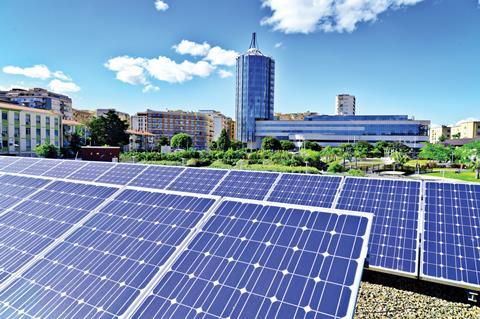Theresa May’s plans to introduce legacy legislation to reduce UK carbon emissions to net zero by 2050 means the property industry has nowhere to hide and all involved must step up their plans to mitigate carbon emissions across their portfolios immediately.

Taking unilateral action is unlikely to be enough, however, and wider cross-industry collaboration is urgently needed.
Providers of large warehouse and logistics spaces across the UK have a head start when it comes to standards of sustainability.
Most new structures are sustainable by design and those built and owned by Prologis UK, for example, exceed the energy efficiency requirements set by current building regulations by 40% to 50%. As well as ensuring all new buildings come with environmental certification, a process of retrofitting is ensuring that existing properties built 10 or more years ago are having their embodied and operational carbon emissions reduced and/or mitigated.
Across the property industry, the approach being taken by developers and owners of large-scale industrial workspaces has gained recognition as a model of sustainability best practice. Rather than legislation being the main driver here, the recent groundswell in public awareness of environmental issues, popularised by the Extinction Rebellion and the BBC’s Blue Planet TV programmes, is forcing businesses to change their behaviours.
With or without the push of ‘net-zero’ legislation, the property industry must now put sustainability firmly at the centre of its thinking and innovate to improve its environmental performance and build on its achievements to date. Investing to upgrade existing properties to reduce their carbon footprint by insulating them and finding ways to eliminate use of fossil fuels and ramp up renewable energy sources must be a priority.

However, there are limits to what the industry can achieve. There comes a point where it is simply not viable to do anything more to a building to reduce its carbon footprint. It can be designed from low-carbon building materials and use less energy by optimising use of daylight and using only LED lighting. It can also be designed with access to renewable energy sources, such as wind or photovoltaic (PV) technology. Beyond that point it becomes difficult to align the supply of energy from on-plot renewables with the demand for energy in the building. The logical next step is to buy renewable energy. However, it’s more difficult than expected to ensure that energy badged as renewable is really contributing to our national carbon reduction commitments.
To move closer to net-zero status, the property industry needs cross-industry support and the energy sector has a central role to play. With government intervention, it should be possible to radically re-engineer our energy supply so that it’s 100% renewable – enabling property owners and their tenants to cut operational carbon emissions further.
For the fast-expanding urban logistics and distribution sector, increasing energy consumption due to automation, as well as demand for faster delivery and around-the-clock services, has underlined the need for efficiency in this area.
Property owners and developers can only achieve so much by adopting and spreading best practice. A joined-up, cross-industry approach to improving the sector’s environmental performance, which has the backing of government, is now urgently needed and is the only way to attain a net-zero future.
Simon Cox is head of sustainability at Prologis in the UK
































No comments yet